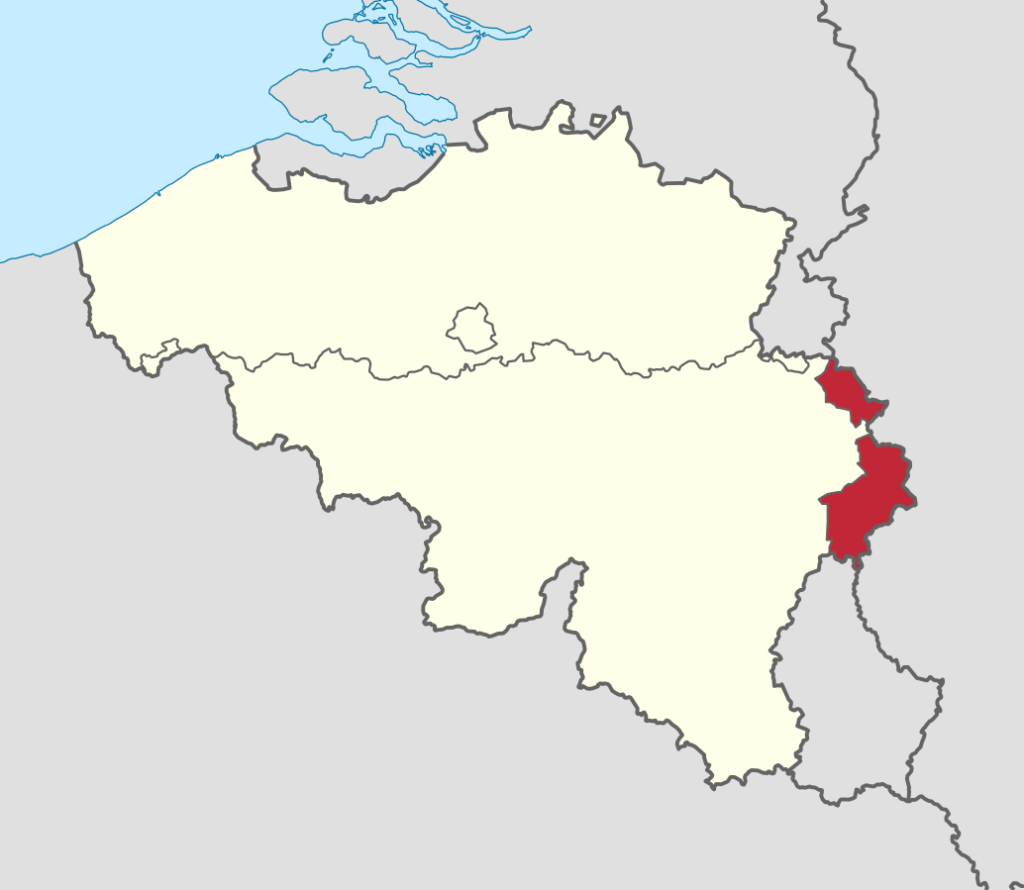In the turbulent day-to-day politics of Belgium's fragmented governments, the country's calm German-speaking Community is frequently overlooked. But where does it come from and why was it created in the first place?
On the border with Germany, nine Walloon municipalities in the far east of the Liège province form Belgium's German-speaking Community – the smallest one in the country. Its conception is tied to the two World Wars.
During the First World War, Belgium attempted to remain neutral but was invaded by German forces as they advanced on the French capital in the early stages. But as Allied troops pushed back, this area turned into frontline territory, which it remained for four years.
As compensation after the war, the 1919 Treaty of Versailles stipulated that some German territory should be given to Belgium. This was ratified in January 1920 and the areas of Eupen, Sankt Vith and Malmedy became part of the Belgian State. While this officially meant that residents became Belgian, the areas were mostly seen as cultural, historical and linguistic transition zones between Belgium and Germany.
From Belgium to Germany and back
During Belgium's occupation during World War II, the reverse happened as Hitler reclaimed the area for Germany; the inhabitants again became German citizens and were conscripted into the German army.
More than 8,000 men from the East Cantons – which comprises the nine municipalities of what is now the Germany-speaking Community as well as francophone Malmedy and Waimes – were conscripted into the German Wehrmacht. Some 2,000 did not survive. After Hitler's defeat, the entire area was restored to Belgium once again.
The municipalities of Sankt Vith and Malmedy were destroyed almost entirely in the Ardennes offensive (also known as the 'Battle of the Bulge') and were later reconstructed.

Belgium's German-speaking Community is indicated in red.
In 1962, Belgium's language border was officially established by law and divided the country into four language areas: the Dutch, the French, the German and the bilingual Dutch-French area. Those language laws gave all municipalities in the small German-speaking part of the country a bilingual status – with facilities for the foreign-speaking minority.
At the time, the German-speaking Community also got its own parliament – bringing Belgium's number of governments to six. Since then, Belgium has three official national languages, with three versions of the national anthem and a parliament for each language community.
Related News
- Belgian politics for dummies: Who is in power where?
- A beginner's guide to Belgium's political parties
- Why Belgium has six governments (and not seven)
The parliament of the German-speaking Community consists of 25 directly-elected MPs, one of whom must also sit on the Federal Senate.
Similar to the French-speaking Community, Belgium's Germanophones changed their name to avoid confusion: since 2017, the community uses "Ostbelgien" (East Belgium) to refer to itself. This is, however, not an official name – the Belgian Constitution only mentions the "German-speaking Community" and has not adopted the new name.
The current government of the German-speaking Community consists of four ministers, led by Minister-President Oliver Paasch of the Pro Deutschsprachige Gemeinschaft (ProDG) party.
Since 1990, the nearly 78,000 inhabitants of the area celebrate the 'Day of the Germany-speaking Community' ("Tag der Deutschsprachigen Gemeinschaft" in German) every year on 15 November – which is King's Day in the rest of Belgium.

